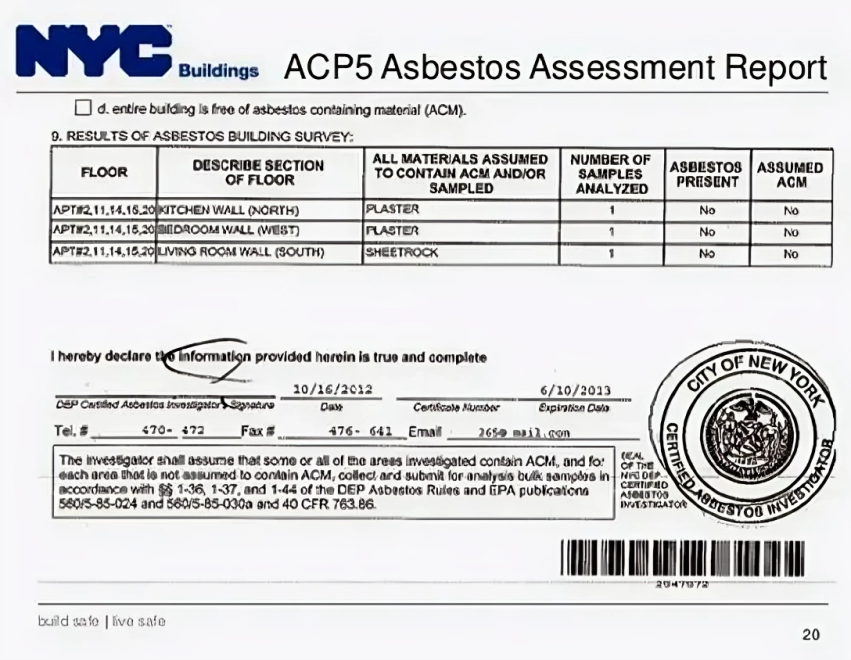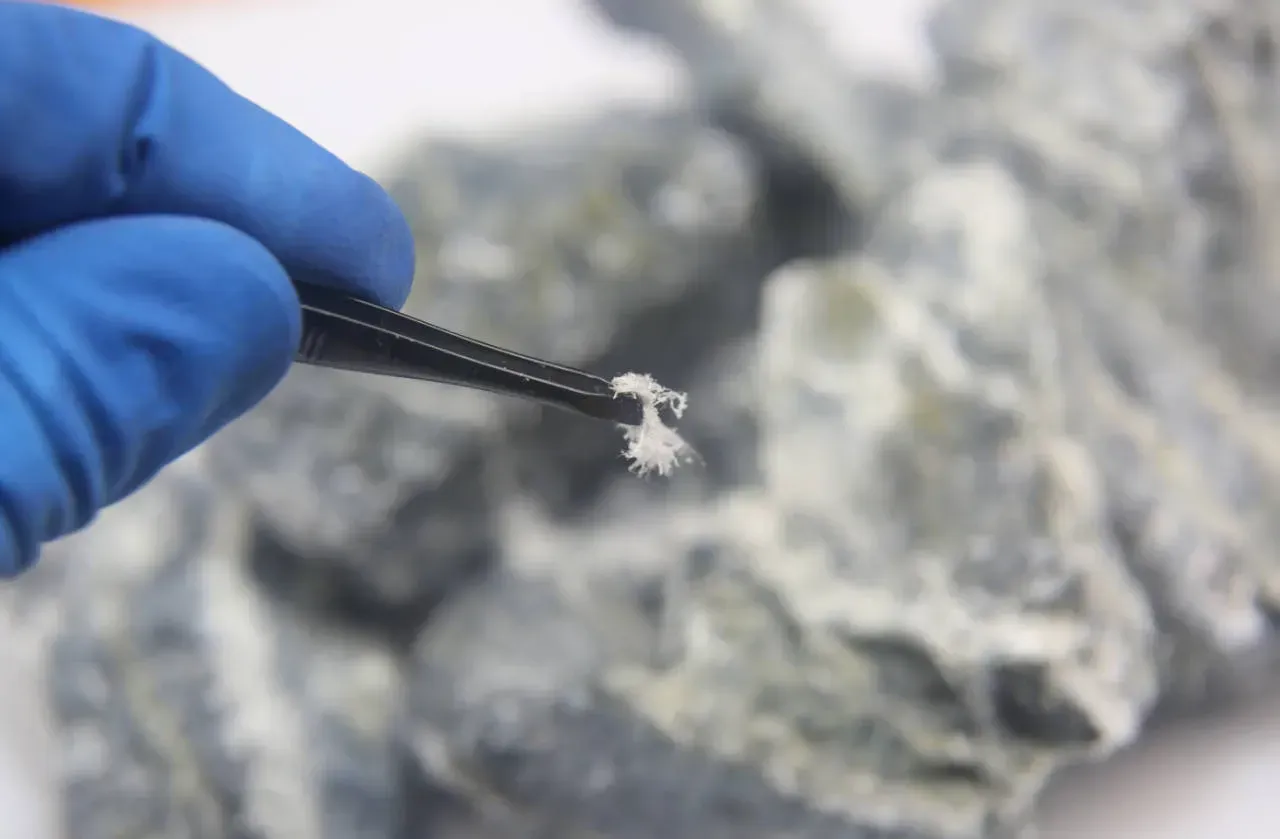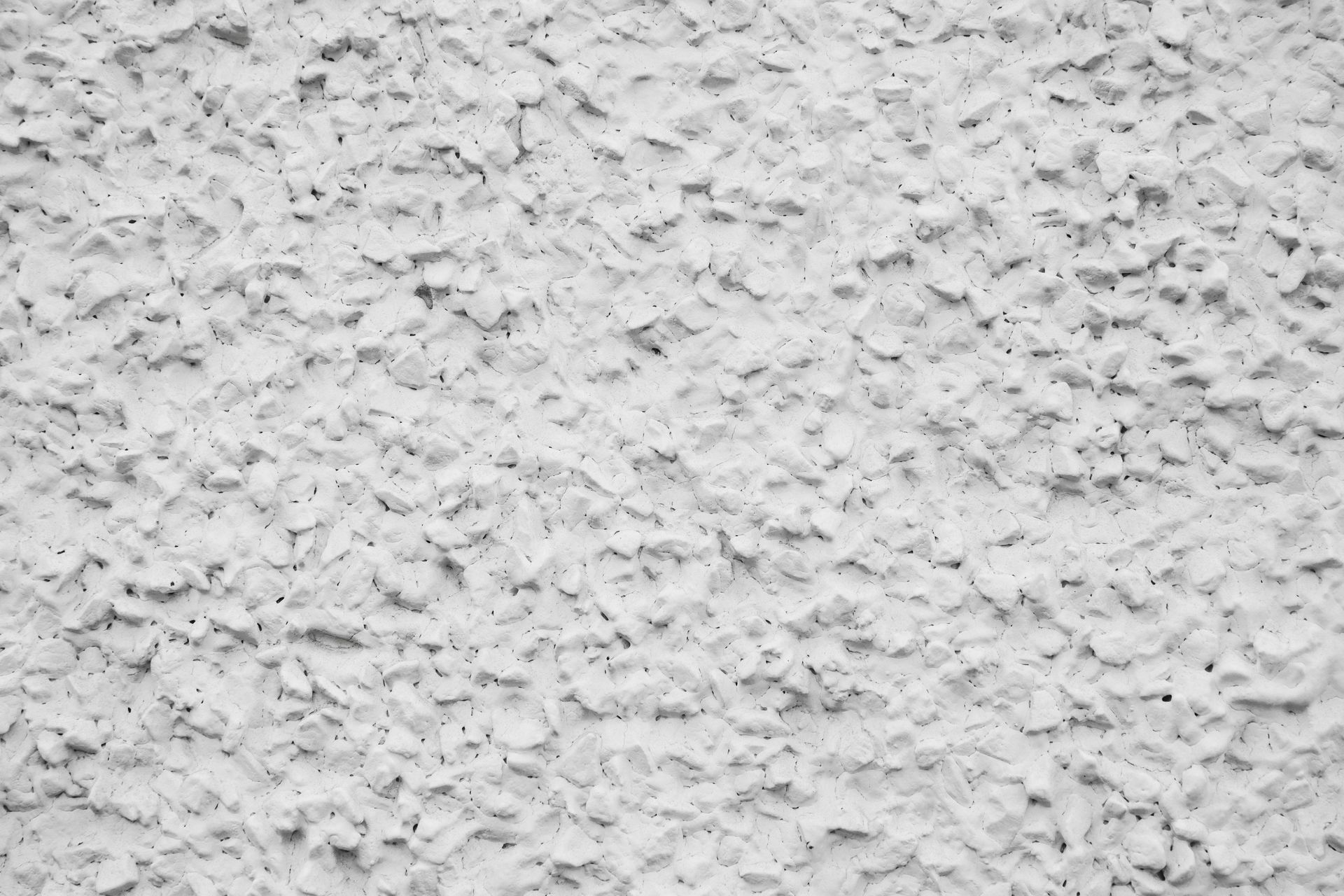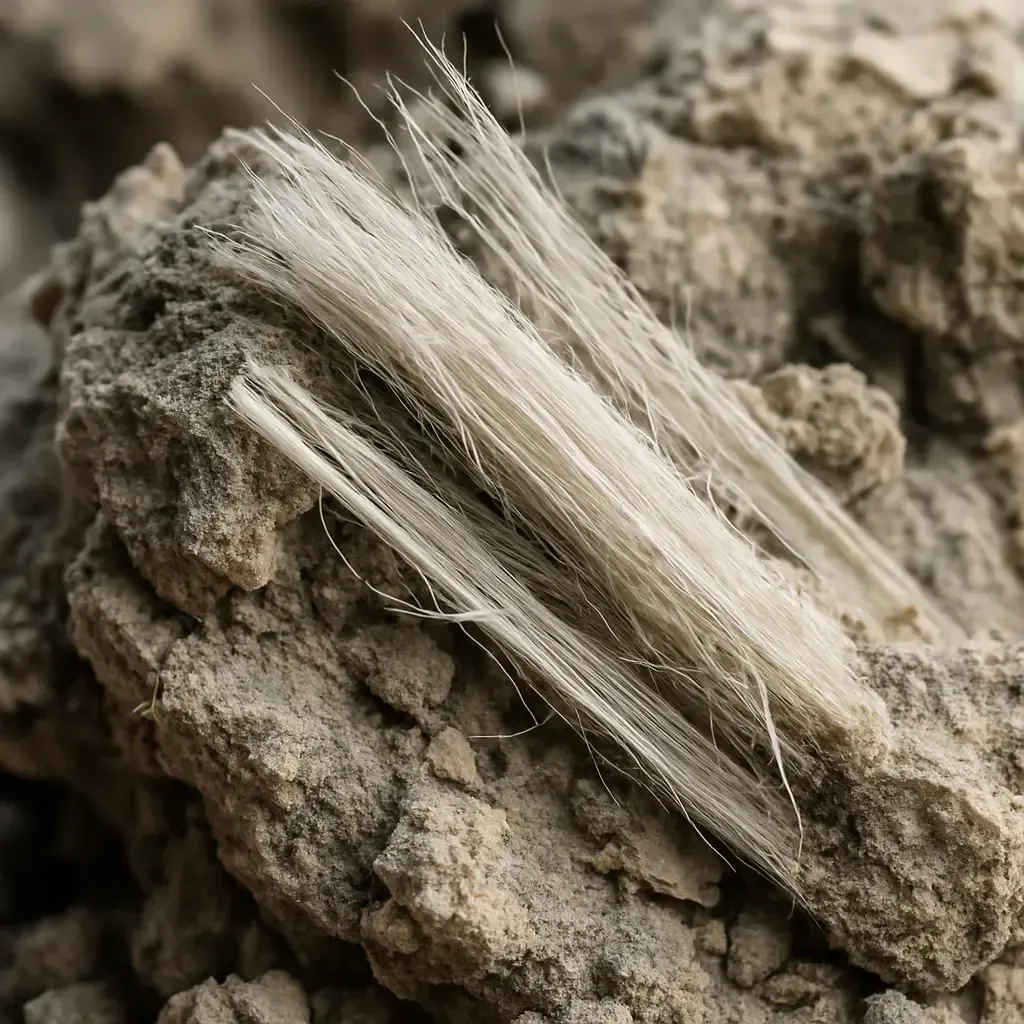Who Needs to File an ACP 5 Form in NYC? Your Essential Guide to Asbestos Compliance
Navigating the world of construction and renovation in New York City can feel like a maze, especially when it comes to permits and regulations. One document that frequently comes up, and is absolutely crucial for many projects, is the ACP 5 form. But what exactly is it, and more importantly, who needs to file an ACP 5 form in NYC?
This comprehensive guide will break down everything you need to know about the ACP 5, from its purpose and requirements to the serious consequences of non-compliance. Whether you're a homeowner planning a small renovation, a contractor undertaking a major demolition, or an architect designing a new space, understanding the ACP 5 is vital for a smooth, safe, and legally compliant project.
Why Does ACP 5 Form Exist?
Before diving into the specifics of the ACP 5 form, it's important to understand why this form exists. New York City, with its rich history and older building stock, has a significant number of structures built before 1987. This date is critical because it's generally when asbestos-containing materials (ACMs) were widely used in construction due to their excellent insulating and fire-resistant properties.
However, we now know that disturbing asbestos can release microscopic fibers into the air, leading to serious health issues like lung cancer, mesothelioma, and asbestosis. To protect workers and the public, New York City has stringent regulations in place, primarily enforced by the Department of Environmental Protection (DEP) and the Department of Buildings (DOB). The ACP 5 form is a cornerstone of these regulations.
What Exactly is an ACP 5 Form?
The ACP 5, formally known as the Asbestos Assessment Report, is an official document issued by a DEP-certified asbestos investigator. Its primary purpose is to certify one of two things:
- That no asbestos-containing materials (ACMs) are present in the specific areas of your building where work is planned.
- That ACMs are present, but they will not be disturbed by the proposed construction, renovation, or demolition activities.
In essence, the ACP 5 acts as a declaration that your project is a "non-asbestos project" as defined by NYC DEP regulations, meaning it won't disturb friable asbestos (asbestos that can easily become airborne).
So, Who Needs to File an ACP 5 Form in NYC?
The short answer is: anyone undertaking renovation, alteration, modification, or demolition work in a building constructed before April 1, 1987, that requires a permit from the New York City Department of Buildings (DOB).
Let's break that down further with more specific scenarios:
- Building Owners: If you own a residential, commercial, or industrial property in NYC and are planning any work that involves disturbing existing building materials, you are ultimately responsible for ensuring an asbestos survey is performed and an ACP 5 is filed if required.
- Contractors: As a contractor, if your project involves renovation, remodeling, or demolition of any building components, you will likely need an ACP 5 before you can even begin work or obtain the necessary permits. This includes seemingly minor projects like plumbing, electrical, or HVAC system installations if they disturb existing materials.
- Architects and Engineers: While not directly "filing" the form in the sense of signing and stamping it, architects and engineers play a crucial role in the process. They design the project and often advise their clients (building owners) on the necessity of an asbestos survey and the ACP 5 form. The ACP 5 is often a prerequisite for obtaining building permits for their designs.
- Real Estate Professionals: In some property transactions, especially those involving older buildings slated for redevelopment or extensive renovation, proof of an asbestos inspection and an ACP 5 may be required to avoid potential legal and health risks, ensuring a smooth transaction.
Key Triggers for Needing an ACP 5:
- Any renovation or remodeling project in a pre-1987 building.
- Demolition of any structure or specific building components.
- Work requiring permits from the NYC Department of Buildings (DOB). Even if you think your building is asbestos-free, if your job requires a DOB work permit, an asbestos survey and potentially an ACP 5 are typically mandatory.
The ACP 5 Process: How it Works
Understanding the steps involved can demystify the process:
- Initial Assessment and Scope of Work: Before any work begins, a DEP-certified asbestos investigator will review your project plans and architectural drawings to understand the scope of work and identify areas where asbestos-containing materials might be disturbed.
- Asbestos Survey and Sampling: The investigator will conduct a thorough inspection of the worksite. This involves collecting samples of suspected ACMs (e.g., insulation, flooring tiles, roofing materials, plaster, caulking) from the areas that will be affected by the proposed work. The number of samples taken depends on the type and amount of material.
- Laboratory Analysis: These samples are then sent to a certified laboratory for analysis to determine the presence and type of asbestos.
- ACP 5 Issuance (or Further Action):
- If no asbestos is found, or if asbestos is present but will not be disturbed by the planned work, or if the amount of friable asbestos is considered a "minor project" (less than 10 square feet or 25 linear feet), the certified asbestos investigator will complete, sign, and seal the ACP 5 form. This form then gets filed with the DEP and DOB.
- If asbestos is found and will be disturbed by the planned work (and it's not a minor project), an ACP 5 cannot be issued immediately. In this scenario, you will need to engage a licensed asbestos abatement contractor to safely remove the asbestos-containing material. After the abatement is completed, the investigator can then re-inspect and, if all clear, issue the necessary ACP 5 form.
5. Permit Acquisition: Once the ACP 5 is filed and approved, it serves as crucial documentation for obtaining your work permits from the NYC Department of Buildings, allowing your project to move forward.
Why is the ACP 5 So Important? The Consequences of Non-Compliance
Failing to file an ACP 5 when required, or ignoring asbestos regulations, can lead to severe consequences, impacting your project, finances, and even health:
- Project Delays and Stoppages: Without the necessary ACP 5, your project can be halted by the DOB or DEP. This means lost time, increased costs, and frustrated stakeholders.
- Significant Fines and Penalties: New York City has hefty fines for asbestos violations. These can range from thousands to tens of thousands of dollars, depending on the severity and nature of the infraction.
- Legal Liability: Property owners and contractors can face legal action for negligence if asbestos is disturbed without proper protocols, leading to exposure and health issues for workers or the public.
- Health Risks: Most importantly, skipping the ACP 5 process directly jeopardizes the health and safety of everyone involved in the project, as well as those who live or work nearby. Undisturbed asbestos is generally safe, but when disturbed, its fibers can become airborne and inhaled, leading to serious, long-term health problems.
- Revocation of Licenses: For certified asbestos investigators or contractors, failure to comply with regulations can result in disciplinary action, including the suspension or revocation of their licenses.
- Difficulty Obtaining Future Permits: A history of asbestos violations can make it significantly harder to obtain permits for future projects in NYC.
Important Considerations and Tips
- Start Early: Asbestos assessments and filings take time. Factor this into your project timeline to avoid delays.
- Hire Certified Professionals: Only DEP-certified asbestos investigators can conduct the necessary surveys and issue the ACP 5 form. Do your due diligence and ensure you are working with qualified and reputable professionals.
- Understand Friable vs. Non-Friable Asbestos: While the ACP 5 primarily deals with situations where friable asbestos will not be disturbed, it's important to understand the distinction. Friable ACM is easily crumbled and poses a higher risk. Non-friable ACM (like floor tiles or roofing materials) is more bound, but can still release fibers if aggressively disturbed.
- The PW1 Form: When applying for a permit with the DOB, the PW1 application will ask whether the project requires asbestos abatement, does not require abatement, or is exempt. The ACP 5 is often linked to this declaration.
- Stay Informed: NYC's regulations can change. Regularly check the NYC Department of Environmental Protection (DEP) and Department of Buildings (DOB) websites for the most up-to-date information and forms.
Conclusion
The ACP 5 form is not just a bureaucratic hurdle; it's a critical component of New York City's commitment to public health and safety in construction. If you're planning any project that involves disturbing existing building materials in a pre-1987 structure, you very likely need to file an ACP 5 form in NYC.
By understanding its purpose, following the correct procedures, and engaging certified professionals, you can ensure your project proceeds safely, legally, and without unnecessary delays or costly penalties. For comprehensive environmental consulting and assistance with crucial documentation like the ACP 5 form, consider reaching out to MJC Environmental LLC.
They provide the expertise needed to navigate these complex regulations, helping ensure your project complies with all NYC DEP requirements. Don't let asbestos be the uninvited guest that derails your construction dreams; get the necessary assessment and file your ACP 5.





